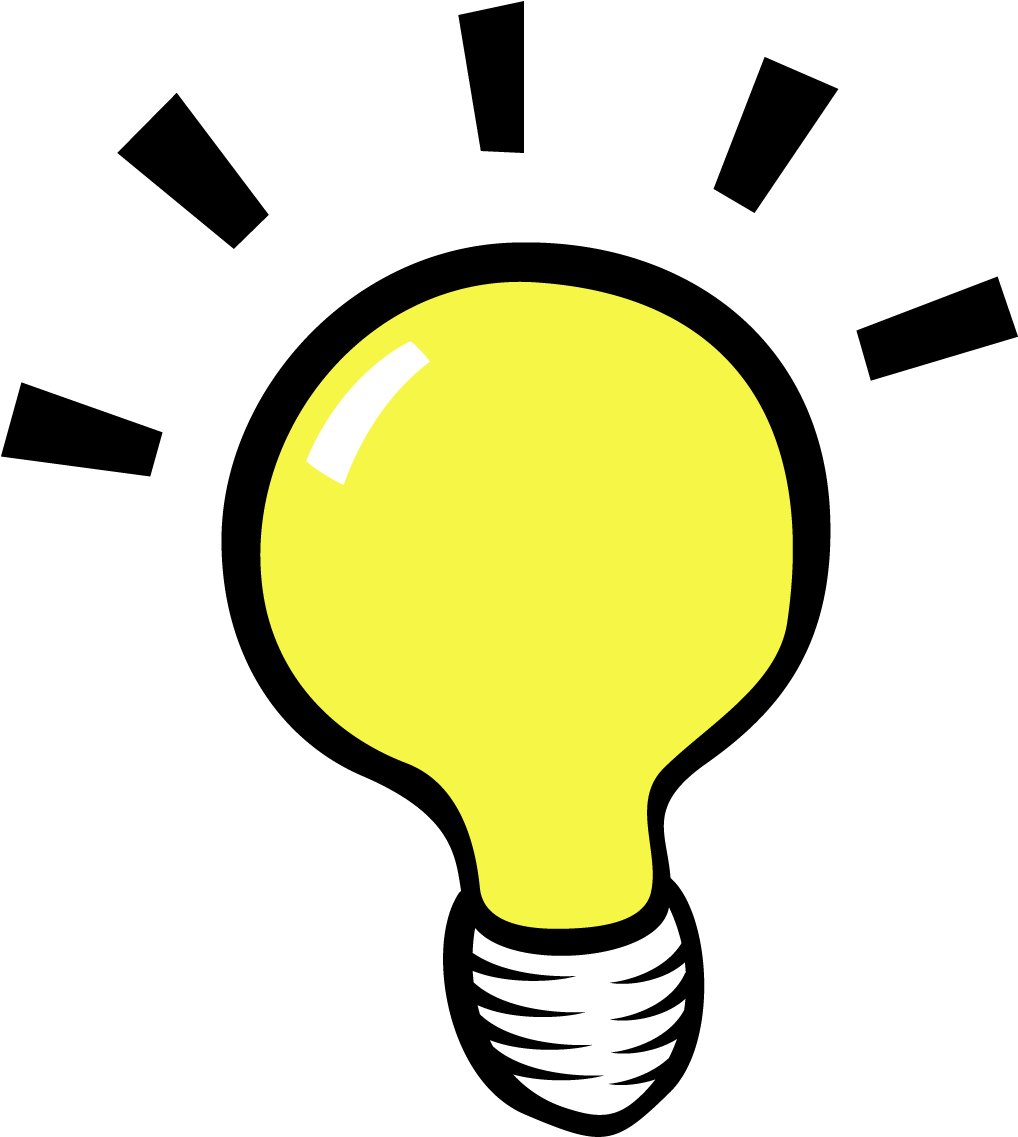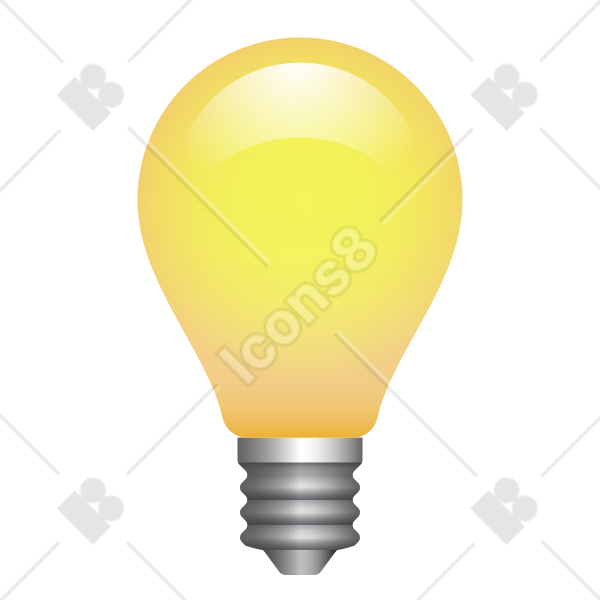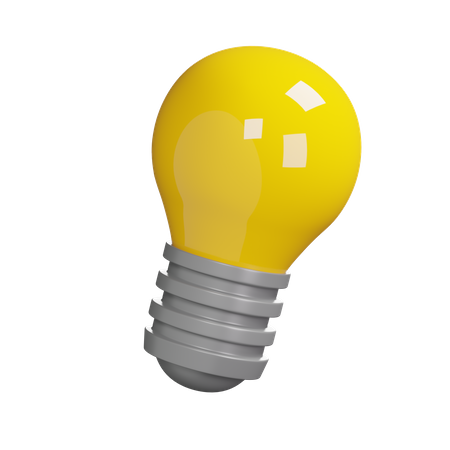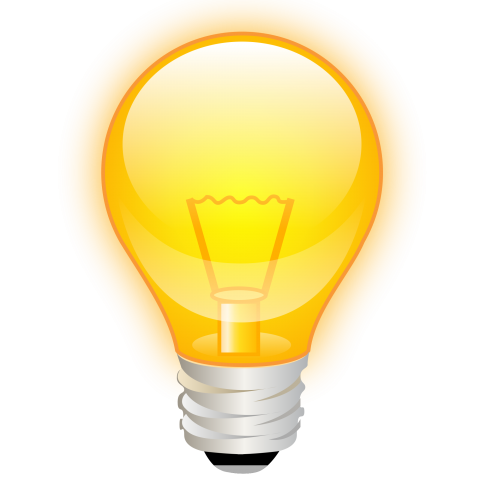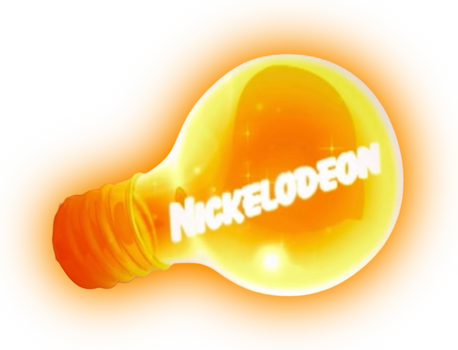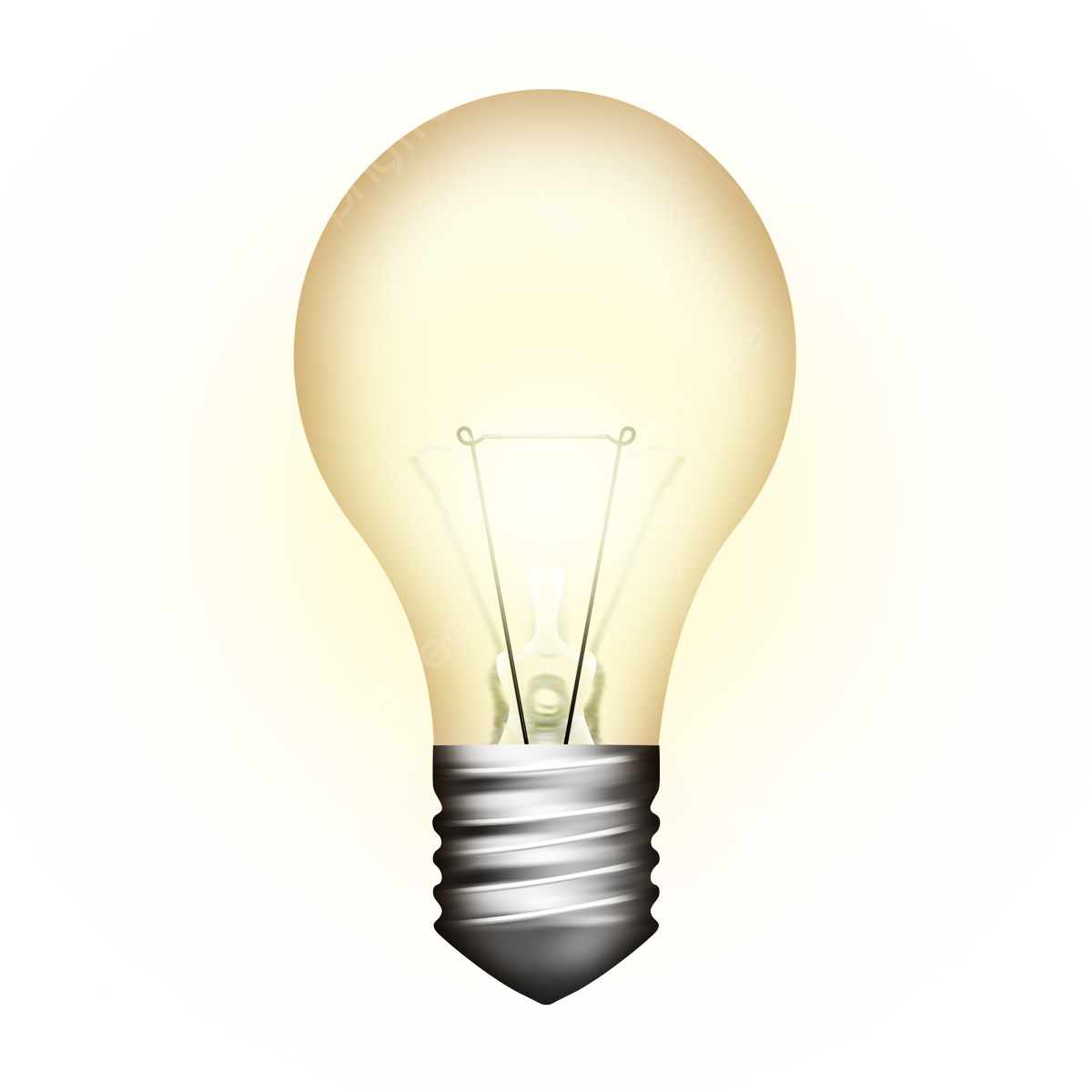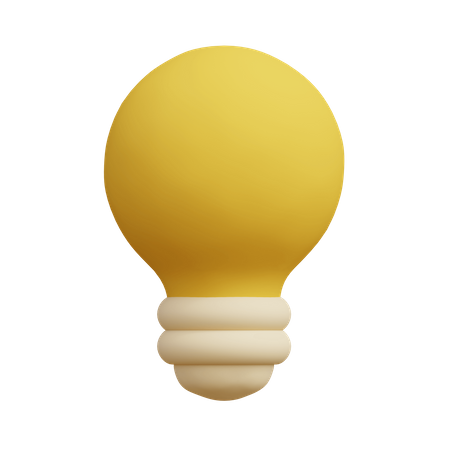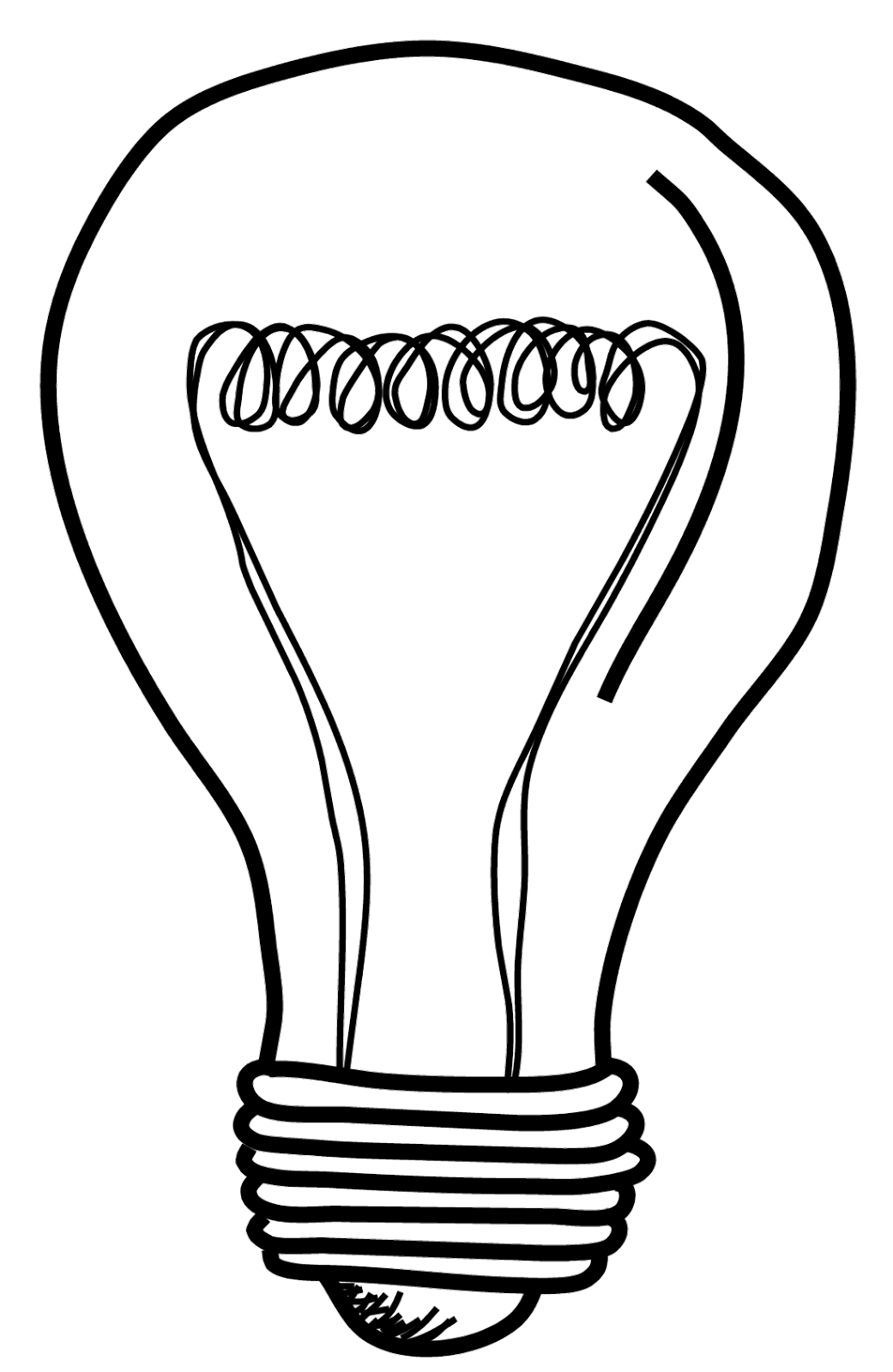Download top and best high-quality free Lightbulb PNG Transparent Images backgrounds available in various sizes. To view the full PNG size resolution click on any of the below image thumbnail.
License Info: Creative Commons 4.0 BY-NC
A lightbulb, also known as an electric bulb or lamp, is an electrical device that converts electricity into visible light. It was one of the most significant inventions that revolutionized the way humans illuminated their surroundings. History states that Thomas Edison was the first to invent a commercially viable electric lightbulb, which paved the way for the contemporary lightbulbs that we see today and enjoy a bright, well-lit world.
Working of a Lightbulb
A standard lightbulb usually consists of a glass or silica envelope, a filament, and a base. The filament, which is the critical part of a lightbulb, is made up of a long and thin wire, which is usually made of tungsten. When electricity passes through the filament, it heats up to an extremely high temperature, which makes it glow and emit visible light.
The process of light emission in a lightbulb is an example of incandescence, which is the release of light by a hot object. Incandescent lightbulbs produce a warm white or yellowish light that is perfect for residential areas and small commercial settings. They are easy to install and replace, making them a popular choice for many people.
Types of Lightbulbs
There are various types of lightbulbs available today, each with distinct characteristics and advantages. Here are some of the most popular types:
Incandescent Lightbulbs
Incandescent lightbulbs are the traditional lightbulbs with a warm white or yellowish color. They are usually inexpensive, but they consume a lot of power and have a short lifespan, making them less energy-efficient than other kinds of lightbulbs.
LED Lightbulbs
LED (Light Emitting Diode) lightbulbs are high-energy efficient, long-lasting bulbs that consume less power than incandescent and fluorescent bulbs. They emit a bright, white light that can be customized to a variety of colors. LED bulbs are perfect for both commercial and residential lighting settings and are more expensive than traditional lightbulbs.
Fluorescent Lightbulbs
Fluorescent lightbulbs are long, tube-shaped bulbs that consume less power than incandescent bulbs, but have a longer lifespan. They produce a cooler white light and are commonly used in commercial and industrial settings due to their long life span and bright output. However, fluorescent bulbs contain mercury, which makes their disposal a challenge and less eco-friendly.
Advantages of Lightbulbs
Apart from the convenience of being able to see in the dark, lightbulbs have many benefits.
Energy Efficiency
The use of high-quality, energy-efficient lightbulbs can lead to significant savings on electricity bills. Energy-efficient lightbulbs use much less power to emit the same amount of light as a traditional lightbulb, thus reducing energy consumption and cost.
Durability
Lightbulbs have a lifespan ranging from a few hundred hours to tens of thousands of hours, depending on the type you use. LED lightbulbs have the longest lifespan, and they can last up to 50 times longer than traditional incandescent lightbulbs.
Variety
There are various lightbulbs available in the market with different shapes, sizes, colors, and types. Consumers can choose from an array of bulbs that meet their specific needs- from decorative bulbs to commercial lighting sources.
In Conclusion
Lightbulbs have come a long way since Edison invented the first practical electric lightbulbs in 1879. Today, we enjoy a wide variety of lightbulbs that make our world brighter, more energy-efficient, and more customized to our needs. Whether you seek efficiency, affordability, durability, or brightness, there is a lightbulb out there for you.
Download Lightbulb PNG images transparent gallery
- Lightbulb PNG Picture
Resolution: 512 × 512
Size: 29 KB
Image Format: .png
Download
- Lightbulb PNG
Resolution: 1018 × 1137
Size: 27 KB
Image Format: .png
Download
- Lightbulb Transparent
Resolution: 512 × 512
Size: 16 KB
Image Format: .png
Download
- Lightbulb
Resolution: 600 × 600
Size: 111 KB
Image Format: .png
Download
- Lightbulb Background PNG
Resolution: 512 × 512
Size: 41 KB
Image Format: .png
Download
- Lightbulb No Background
Resolution: 450 × 450
Size: 72 KB
Image Format: .png
Download
- Lightbulb PNG Clipart
Resolution: 512 × 512
Size: 10 KB
Image Format: .png
Download
- Lightbulb PNG Cutout
Resolution: 480 × 480
Size: 121 KB
Image Format: .png
Download
- Lightbulb PNG File
Resolution: 512 × 512
Size: 36 KB
Image Format: .png
Download
- Lightbulb PNG Free Image
Resolution: 512 × 512
Size: 17 KB
Image Format: .png
Download
- Lightbulb PNG HD Image
Resolution: 1351 × 2048
Size: 94 KB
Image Format: .png
Download
- Lightbulb PNG Image File
Resolution: 458 × 350
Size: 215 KB
Image Format: .png
Download
- Lightbulb PNG Image HD
Resolution: 512 × 512
Size: 28 KB
Image Format: .png
Download
- Lightbulb PNG Image
Resolution: 1200 × 1200
Size: 807 KB
Image Format: .png
Download
- Lightbulb PNG Images HD
Resolution: 450 × 450
Size: 66 KB
Image Format: .png
Download
- Lightbulb PNG Images
Resolution: 512 × 512
Size: 15 KB
Image Format: .png
Download
- Lightbulb PNG Photo
Resolution: 1041 × 1600
Size: 234 KB
Image Format: .png
Download
- Lightbulb PNG Photos
Resolution: 512 × 512
Size: 20 KB
Image Format: .png
Download
- Lightbulb PNG Pic
Resolution: 922 × 936
Size: 48 KB
Image Format: .png
Download

